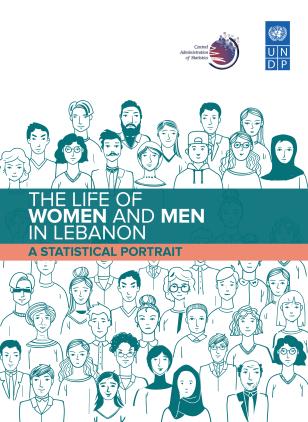The Life of Women and Men in Lebanon: A Statistical Portrait

The Life of Women and Men in Lebanon: A Statistical Portrait
October 19, 2021
The compilation, analysis and dissemination of gender statistics are critical to capture the specific realities in the life of women and men. They are powerful tool to highlight aspects of gender inequality, and to provide an evidence base for developing and monitoring policies and programmes oriented towards reducing these inequalities. Gender data is key to achieve the 2030 Agenda and other national commitments. Government policies and programs in Lebanon articulate the need for measuring and monitoring gender equality, which has led to a substantial increase in demand for data producers to make available relevant and reliable gender statistics.
In response to the rising needs for more gender disaggregated data and indicators, and to better understand trends in gender equalities and inequalities over the past 15 years, CAS- with the support of UNDP- did a compilation of gender-disaggregated indicators based on official survey-based statistics and administrative data. The results were comprehensively presented in the report “The life of Women and Men in Lebanon: A Statistical Portrait”. This compilation provides a better understanding of the country’s progress on gender inequality and highlights critical gaps and disparities yet to be bridged. The report focused on six thematic areas: Demography, health, education, labor market, socio-economic conditions, and decision-making and human rights.
The statistics and indicators presented in the report consist of: Sex-disaggregated data that are presented separately for women and men, or girls and boys, to provide information about gender disparities or variations in a given domain; Gender-relevant statistics that comprise data pertaining specifically to women or to men (as for instance maternal mortality), or other data that captures specific gender issues. Disaggregation of data was made available, not only by sex but also considering other key variables like the level of education, place of residence, nationality, disability status, to give a clearer picture of the relative status of women and men, and to highlight social inequalities they may experience.

 Locations
Locations